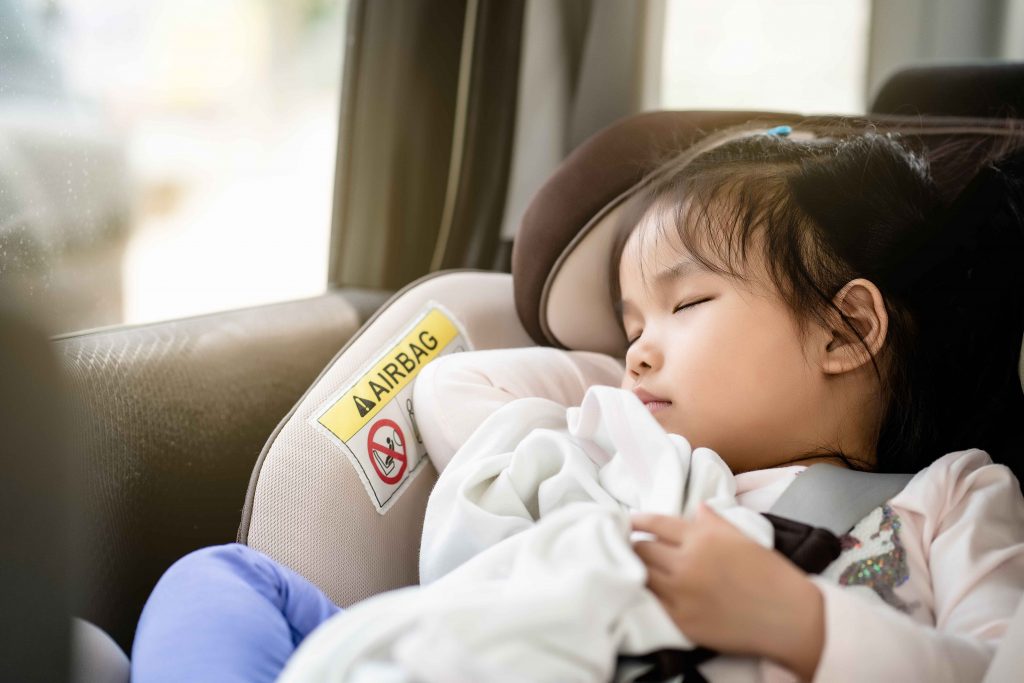Hot cars can be incredibly dangerous and even deadly to children. No one ever thinks it will happen to them, but the stark reality is that an average of 38 children die every year from being left in a vehicle. Pediatric vehicular heatstroke occurs every month of the year, not just in the summer months. Children’s bodies heat up 3-5 times faster than adult bodies. Heatstroke can occur on a day as low as 57 degrees Fahrenheit.
What is heatstroke?
Heatstroke is a condition that occurs when the body overheats. The most serious form of heatstroke can occur when a person’s body temperature reaches or exceeds 104 degrees Fahrenheit. Symptoms can include dizziness, disorientation, agitation, confusion, sluggishness, seizures, hot, dry skin, nausea and vomiting, loss of consciousness, rapid breathing, rapid heartbeat, and headache.
How do children end up in hot vehicles?
There are three different circumstances for kids in hot cars:
- Forgotten by caregiver
- Gained access on their own
- Knowingly left by a caregiver
When we break down the numbers, about 53% of children who end up in hot cars are forgotten by their caregivers. 47% of those were related to not being dropped off at childcare. We often hear questions like, “How could anyone forget their child in the car? I would never.” It is this kind of thinking that can cause such accidents. Anyone can fall victim to this tragedy. Most of the time, a change in routine causes someone to unknowingly leave a child in the car. Changing who is dropping the child off that day, an unexpected stop on your normal route, switching around your typical day-to-day, etc. Other factors, such as sleep deprivation, fatigue, stress, etc, can all lead to accidentally leaving your child in the vehicle.
How do we prevent leaving kids in hot cars?
At the Safety Stop at St. Louis Children’s Hospital, we encourage caregivers to establish a routine of always checking the back seat every time they get out of their vehicle to make sure to leave no one behind. One way we do this is by giving out a Sophie’s KISS (Keeping Infants Safe and Secure) memory device as a slap bracelet. Sophie was the daughter of two physicians at Barnes Jewish Hospital. She was accidentally left in a car due to a change in routine. We tell Sophie’s story hoping this does not happen to other children.
The way the slap bracelet memory device works is that you wear it around your wrist while you are driving. It is bright neon yellow and says “STOP BABY IN CAR” to grab attention. Store the bracelet in the car seat when your child is not in the car. When you place your child in their car seat, take the bracelet and put it on your wrist. When you park, go to the back seat, take the bracelet off, put it in the car seat, and take your child. Once you return to the car, place your child in and put the bracelet back on. The idea is that you are exchanging out the bracelet for your child. The goal is to create a routine of checking the back seat.
Other ways to prevent leaving kids in hot cars are:
- Leaving valuables in the back seat while you drive that you are familiar with taking out of the car with you, such as a cell phone, purse, or wallet.
- Putting the child’s things, such as a diaper bag or stuffed animal, in the front seat as a visual reminder that the child is in the back.
- Ask your childcare provider to call you if the child isn’t dropped off within the usual time.
- Always lock your parked car and teach your children never to play or hide in cars.
A little over half of the children we see suffer from pediatric vehicular heat stroke are unintentionally left in the vehicle. But about 25% of children gain access on their own. This could be children playing hide and seek, wanting to play in the car, etc. It is imperative to lock parked vehicles to help prevent this. In addition, teach children that cars are not for playing in or around. If your child is ever missing, the first place to check is the pool, lake, or body of water, and the second is the car (including the trunk).
The remaining 20% of children are knowingly left in the vehicle. We want to mention that it is never ok to leave your child in the vehicle for any amount of time, not even for a minute. Vehicles heat up FAST! They can rise 20 degrees in just 10 minutes.
Pediatric vehicular heatstroke can happen to all ages. Most of the time, when we think of leaving children in hot cars, we think about infants. However, only 31% of these deaths are less than a year old. The average age is two years old (27 months).
With 938 child deaths from being left in hot vehicles since 1998, there is still work to be done. To learn more about pediatric vehicular heatstroke, obtain a Sophie’s KISS bracelet, or have your car seat checked free of charge, please get in touch with Safety Stop at 314-565-0369 to make an appointment at one of our five locations.






Comments